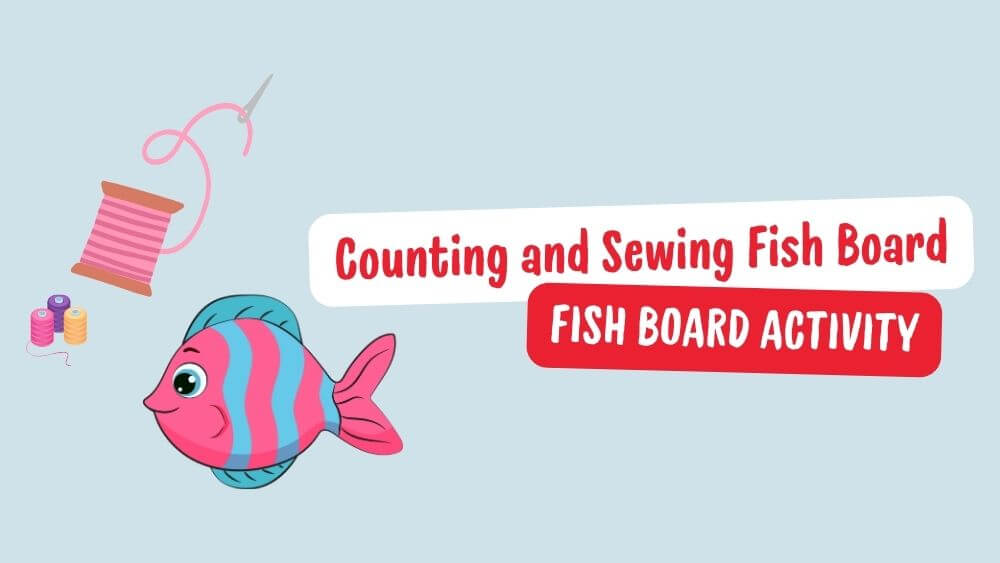Simple and full of fun, this counting and sewing fish board activity can fill the hearts of your children with joy as they learn a lot of things from it. Interactive and engaging, your children will never feel bored while learning math again:
Suitable for:
This activity is designed for children between two and five years of age, as they can learn how to sew, count, and also acquire math skills:
What You’ll Learn:
1. Therapeutic tool – Creating a cardboard base with the drawing of a cute fish for learning sewing and math effortlessly can serve as a therapeutic tool for children who have been diagnosed with speech delays, ADHD, and autism. Just keep swimming!
2. Number recognition – Sewing through the holes on the activity board can help children recognize numbers and grasp the sequence of the appearance of the numbers in math.
3. Problem solving – When your children engage in this activity, they will be able to acquire critical thinking skills that will support them as they make important decisions for solving problems later on in life.
4. Cognitive development – Whenever children participate in this activity, they will develop a love for math and thinking scientifically. Moreover, the critical skills required for the same will also develop along with them.
5. Patience – As your children engage in this activity, they will learn how to have patience in life as they sew the shoelace through the holes in the cardboard sheet.
Video selected: https://ie.pinterest.com/pin/120612096263096852/
Material required:
1. Cardboard sheets: Have at least one cardboard sheet ready for this activity
2. Hole punch: To punch holes in the cardboard sheet.
3. Colorful markers: To draw a fish on the cardboard sheet and write numbers on it
4. Shoe lace: To thread into the holes in the cardboard sheet as per the normal number sequence in math.
The procedure for preparing:
1. Prepare the cardboard sheet base –
Take the cardboard sheet and draw a big fish on it. Against 20 points on the body of the fish, write ten numbers on one side and ten (non-consecutive numbers) on the other. For example, if you have written the number 1 on one side of the cardboard sheet, write the number two on the other half of the sheet such that it faces the number one. Beneath each number, mark a point with your marker.
2. Punch holes in the cardboard sheet base –
Take a hole punch and punch holes with it on the points that you have marked beneath each number.
3. Ask your children to participate –
Encourage your children to thread the shoelace through the different holes that you have punched in the cardboard sheet in the sequence the numbers normally appear. For instance, if your children have threaded the hole against number one, then they should thread the hole against number two next, and so on till they reach number twenty. Just make sure that your children do not tie up their shoelaces at any point in time during the activity.
4. Review and repeat –
Ask your children to repeat the activity as you keep a watchful eye on them as they perform it. After reviewing the activity, ask them to repeat it till you are certain that they have mastered it.
The more your children practice counting and sewing, the better their chances of learning not only how to count but also sewing and threading. At the end of this activity, they will have also acquired some other skills that are indispensable for their future.
Reference: https://ie.pinterest.com/pin/120612096263096852/
